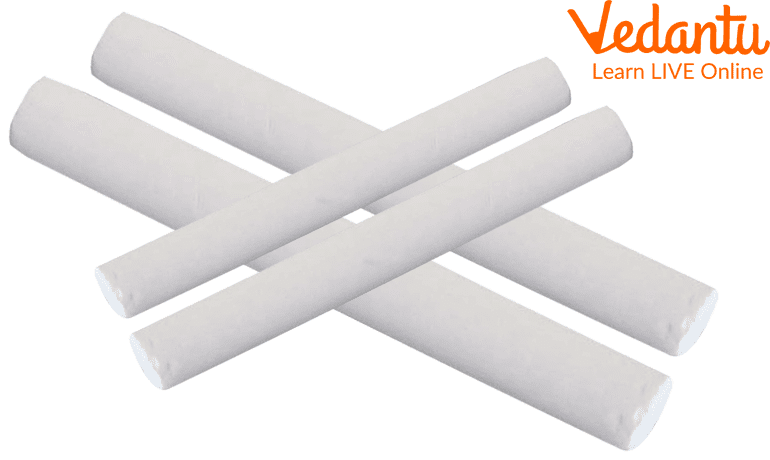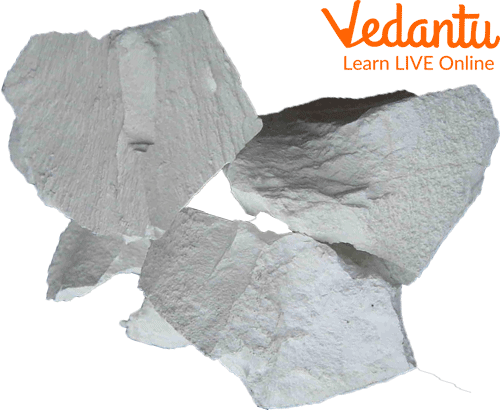




Let’s Gather Some Interesting Information about Chalks
Chalk is a soft, whitish stone. It is a kind of limestone. Like different types of limestone, it is produced using animal shells and requires numerous years to shape. It has many purposes. Chalk is present in a lot of northwestern Europe. Britain's well-known white cliff of Dover is produced using chalk. In the United States, chalk stores are tracked down in Arkansas, Louisiana, Texas, and Wyoming.
Chalk is produced using the shells of minuscule ocean animals. At the point when these animals die, their shells sink to the ocean's bottom. Mud covers the shells. Layers of shells and mud gradually develop. Now let’s dive deep and gather more information about chalks.

Chalk
Characteristics of Chalk
A chalk store structures when this material solidifies. The entire cycle can require a long period. Some of the time the water level drops. At the point when this occurs, the chalk can rise over the water's surface. This is the way chalk cliffs are shaped.
The chalk is white or grey. It is additionally permeable.
This implies that rain and other water can get into it. After numerous years, heaps of rain can gather in a space of chalk. A few urban communities get their drinking water from this collection of water. Oil and petroleum gas additionally gather in chalk. Chalk is highly resistant to weathering. It can stock up a large volume of groundwater as it is well joined. Nowadays different colours of chalks are also available which are commonly used in schools and coaching centres.
Chalk is a non-clastic carbonate sedimentary stone that is a type of limestone composed of the mineral calcite

Limestone
Uses of Chalk
Chalk is extremely helpful. Powdered chalk is utilized in toothpaste and stomach medications. Chalk is additionally used to make such items as paint, elastic, and concrete.
Craftsmen draw with chalk. Instructors compose on boards with chalk. Be that as it may, the chalk utilized by craftsmen and educators is sometimes false chalk. It is frequently blended in with different fixings, or it is produced using a mineral called gypsum.
The first encounter with people with chalk happened mostly in schools where the teacher writes with chalk on a blackboard. This mineral chalk readily leaves particles allowing them to stick loosely on rough surfaces.
Coloured chalk, pastel chalk and sidewalk chalk are used to draw on sidewalks, streets and driveways. Chalk is also a source of quicklime by thermal decomposition. Small doses of chalk can be used as an antacid.
Chalk is also prepared with a fully controlled grain size for very fine polishing of metals, which is known as polishing chalk. It is likewise utilized as "slate chalk" for composing and drawing on different types of surfaces.
Harmful Effects of Chalk
Since chalk is made of calcium carbonate and calcium sulphate, it can cause adverse effects on the health of humans. Kids who are exposed to chalk in classrooms can complain of eye irritation, skin irritation, respiratory tract irritation, mucous membrane irritation etc.
Chronic exposure to chalk can cause lung problems and liver damage as well. Some kids might eat and can develop an addiction which can lead to many health problems such as nausea, vomiting, constipation etc. Eating chalk can often disrupt the digestive system and can damage internal organs as well.
Summary
So, now we know what is chalk. Chalk is a white, permeable, sedimentary carbonate rock. It is a type of limestone made out of the mineral calcite and framed profoundly under the ocean by the pressure of minuscule fish that had settled on the ocean bottom. Chalk is normal all through Western Europe, where stores underlie portions of France, steep bluffs are in many cases seen where they meet the ocean, for example, the Dover precipices on the Kent shore of the English Channel.
Chalk is mined for use in industry, for quicklime, blocks, and manufacturer's clay, in farming, and for bringing pH up in soils with high causticity. With this we have come to an end of our article about chalk where we have discussed its uses, characteristics as well as harmful effects. In case of any other doubts, feel free to ask in the comments.
FAQs on What is Chalk?
1. What happens when the chalk piece is heated?
On heating chalk, it becomes fine white dust. This is due to the breaking up of the components in chalk. The particles are not well-defined, so when heated, they separate and form very fine dust
2. What are the common characteristics of limestone
Limestone is a sedimentary rock, composed largely of calcium carbonate and created by the accumulation of marine organisms on the ocean floor over millions of years. It's characterized by its hardness, which makes it durable and easy to carve. It also resists weathering due to its protective surface coating, meaning it will stay intact for centuries even in regions with harsh climates or acidic soil conditions.
3. Describe the history of chalk.
The word chalk was taken from the Latin word ‘calx’ for limestone. This soft, white, porous rock accumulated deep under the sea where dead organic skeletons were buried centuries ago. It was deposited on the continental shelves between 100 and 600 meters. Chalk came from mostly low magnesium calcite skeletons, so it was already in the form of highly stable low magnesium calcite. Chalk is common in Cretaceous marine beds, it was first discovered in Cretaceous only.









